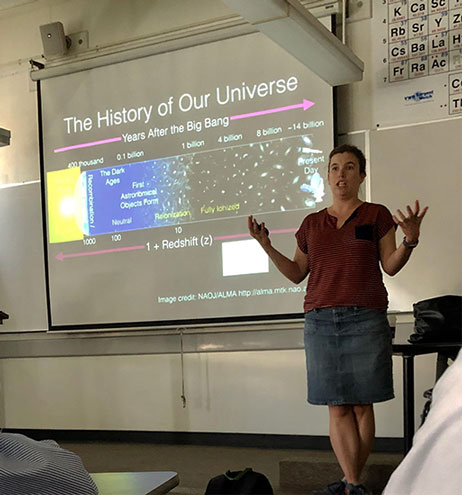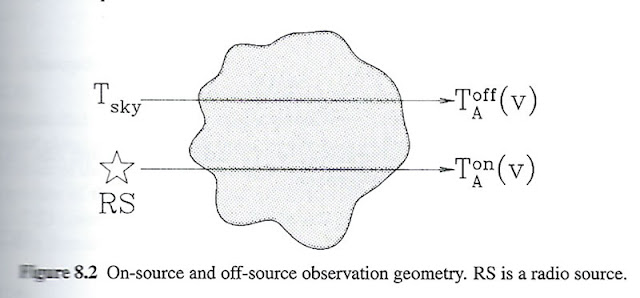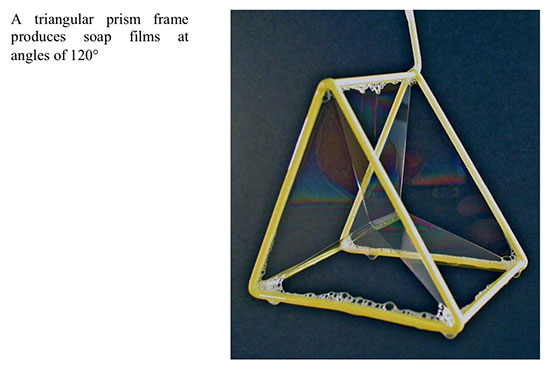Well this week we attended two interesting lectures, which sparked some more investigative work, but before getting into that we should check the calendar for upcoming events.
First up we have this weekend the Philosophy of Dark Energy Workshop at UCI. At first you might wonder about how philosophy and dark energy go together, but it all mostly, sort of, makes sense. Yes, astronomers talk about dark energy and predict its effects and yet have no idea what it is or what is consists of, so there are a lot of interesting papers and conjectures. But when they talk about it, they only describe the effects observed on the expansion of space, never measuring energy at all. So, philosophy of dark energy seems to make sense. For me, I am using this opportunity to review and study the three main lines of observational evidence attributed to dark energy. The three main lines of evidence are: (1) supernova distance measurements, (2) Cosmic Microwave Background power spectrum, and (3) Baryon Acoustic Oscillation. It seems that weak gravitational lensing is also put forward as a line of evidence for some aspect of dark energy too. So the lines of evidence indicate that space is expanding and accelerating, but is it due to dark energy or maybe some more basic failure of general relativity or of the measurements at those cosmic distances?
The second calendar event is our upcoming trip to Fairbanks, Alaska for another attempt at seeing and photographing the northern lights. The weather forecast has been switching around like crazy with forecasts for some clouds, then cloudy skies, then sunny, and back and forth, all with chance of precipitation less than 10%. So, not the great sunny forecast we hoped for, but the fact that it does change around and that we need to get some airline tickets, we have elected to just go and let the weather do what it will! At least when wee get to Fairbanks we can go the Chena Hot Springs and maybe go for a dog sled ride and see the Trans Alaska pipeline or perhaps just have some drinks at the ice bar. Whatever happens we will report on that adventure later next week.
Now back to the lectures, the first of which was the CSULB physics colloquium, where the speaker Dr. Abigail Crites, Caltech, spoke on the epoch of reionization and some of the measurements that she has scheduled at Kitt Peak and at the South Pole. She made a great presentation and it was neat to hear stories of what it is like being an experimental physicist building instruments to measure the very weak signals from that epoch and then installing them and testing them and fixing them while stationed at the south pole. Her instrument development project is called TIME (sorry, I didn't catch what the acronym stands for), which includes a spectrometer with superconducting bolometers for measuring very low temperatures corresponding to mm-wavelength signals. The signals from the epoch of reionization are emitted in their rest frame at around 1.9 THz and are received here at the south pole redshifted to mm-wavelengths in the frequency range of 183 - 326 GHz. All very interesting, thank you Dr. Crites!
 |
| Dr. Abigail Crites, Caltech, describes measurements of the epoch of reionization (Photo: Palmia Observatory) |
Remember that the epoch of reionization is that time just after the first stars ever in the universe begin to turn on and emit UV radiation. The UV radiation then ionizes the hydrogen and helium gas that are then the primary ingredients of the universe.
More about that later, but first let us reacquaint ourselves with just how remote the south pole is and the telescope observatories located there. On the map below, the south pole is about 800 miles from the nearest open sea. The geographical south pole is located on a high plateau of ice at an elevation of about 9300 feet and actually has some of the driest atmosphere on the Earth. So once you get there it is not easy just to run down to the local hardware store or drug store if you need something to fix yourself or the instrument you are working on. Dr. Crites also told us that you can only travel to the south pole maybe 2-3 months during the summer, and only then by airplane, due to the extreme weather at other times of the year.
 |
| Antarctica with the South Pole in center (Source: Wikipedia) |
The South Pole is one of the driest places on Earth and since most of the water vapor has already frozen out of the atmosphere, this is a good thing if you want to make astronomical measurements at wavelengths where the Earth's atmosphere would normally interfere. In the image below you can see two major telescopes at the south pole and located about 1000 meters away from the living quarters.
 |
| BICEP Observatory on the left and South Pole Telescope on right (Source: South Pole Telescope) |
The South Pole Telescope is based on an alt/azimuth mount and has a 10 meter dish that collects the radio frequency signals. Normally, astronomical observatories use an equatorial mount, but, hey, when you are located at the south pole, the alt/az mount is essentially already polar aligned and all azimuth readings face north. Who knew?
 |
South Pole Telescope with 10 meter dish (Source: Wikipedia)
|
Also if you are at the south pole you are also in for some very beautiful auroras. Check out the beautiful aurora image below. Remember that in our February 19, 2019 post, we included the web reference for a short video showing the southern lights moving across the sky. If you haven't seen such videos be sure to check that out. The blog post reference for the video is included in this blog post reference for yours ease of use: http://www.palmiaobservatory.com/2019/02/some-viking-sky-passengers-not-us-saw.html
 |
| Beautiful aurora with the South Pole Telescope in the foreground (Source: Wikipedia) |
After Dr Crites reminded us that much of the interstellar medium (ISM), which is monitored to tell us something of the physics and evolution of the universe, is in an ionized state. I did not recognize this and so had to go back and read up on the ISM. The book shown below is a pretty good textbook.
 |
| Pretty good textbook on the physics of the ISM (Source: Princeton Series in Astrophysics) |
Dr.Crites mentioned that a major part of her work as an instrument designer is to ensure that the objec under study has higher signal level than the background noise. This is difficult when the Earth's atmosphere itself is a major source of the noise and just the thermal temperature of the Earth can be overpowering compared to the weak signal of interest. One aspect of this measurement problem is illustrated in the Draine textbook figure shown below. So, if you have a know light source that can be used as a calibration standard, then by comparing its know magnitude to the observed magnitude you can estimate the amount of noise introduced by some intervening material.
 |
| Subtracting effects of background (Source: Draine, B, " Physics of the Interstellar and Intergalactic Medium") |
Draine also answered the extent to which the Milky Way ISM is ionized also, at least as known in the 2011 edition of the textbook. So something like 23% of the hydrogen is ionized and another 17% is tied up in the molecular form which leaves about 60% neutral hydrogen, which can be mapped with 21cm observations.
 |
| Mass of ionized, neutral and molecular hydrogen in the Milky Way (Source: Draine, B, " Physics of the Interstellar and Intergalactic Medium") |
Another key parameter associated with the ISM is the temperature. Many images of nebula that show up as great astroimages are the result of emissions from the hot hydrogen gas. Cool gas is necessary for collapse into a star, but it is the hot gas that shows up in optical and x-ray wavelengths.
 |
| Principle Constituents of the ISM and associated temperatures (Source: casswww.ucsd.edu) |
The other lecture event of the week was one of the UCI Physical Science Breakfast Lecture series where this time UCI Math Professor Richard Schoen spoke on "Geometry is a Singular Subject." Normally, a lecture of this topic might not have been of interest, but it does turn out that the topic of singularities in differential geometry comes up in physics in the areas of general relativity of curved spacetime, especially around the curvature of black holes and the supposed singularity located there.
 |
| At the UCI Physical Science Breakfast Lecture (Source: Palmia Observatory) |
Professor Schoen described how the notion of singularity comes up in graph and network theory where you want minimize some distance, which I sort of understood, and also in topology and specifically in connection with the Poincare Conjecture, none of which I understood. But I found the connection between singularities and soap films and bubbles fascinating. For example, consider the soap bubble attached to the wildly twisted wire frame in the image of Professor Schoen's slide below.
 |
| Math Professor Richard Schoen uses soap bubble example of geometry with singularities (Source: Palmia Observatory) |
Differential geometry and singularities and the mathematics of minimizing distances plays a key role in analyzing surfaces like that of those exemplified by soap bubbles. Of course, in physics the concepts of minimizing the energy and surface tension affects is used to analyze the films. Now, I am used to seeing the curved nature of soap bubbles, but I was really amazed when Professor Schoen showed some examples of soap bubbles on wire frames that have very straight linear features and end or terminate at singularities. Check out the triangular wire frame below which has a soap bubble that forms angles of 120 degrees and has a singularity, which is equidistant from the three vertices. Pretty neat! Thanks for sparking our interest, Professor Schoen!
 |
| Some soap bubble exhibit linear lines and singularity at a point (Source: www.chymist.com) |
Until next time,
Resident Astronomer George
If you are interested in things astronomical or in astrophysics and cosmology
Check out other postings on this blog at www.palmiaobservatory.com

No comments:
Post a Comment